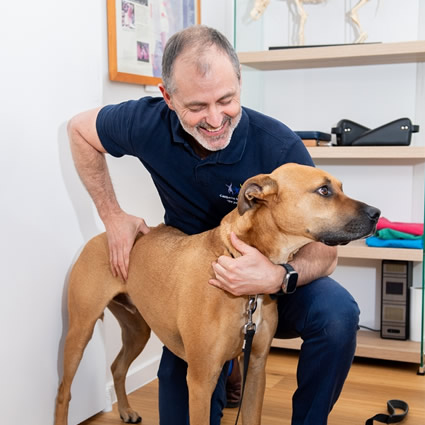Animal Chiropractic in Canberra
Providing Quality Care and Optimal Health for Your Beloved Pets

Have you ever considered chiropractic care or physiotherapy to address pain or improve your health? Well, now you can provide the same level of care for your furry companions! At Canberra Spine Centre, we offer animal chiropractic services, a valuable and emerging field that allows pets to achieve optimal health. With non-surgical and drug-free options, our animal chiropractic services provide effective solutions for correcting biomechanical, neurological, disc, and soft-tissue disorders, as well as rehabilitation programs.
Restoring Optimal Function and Rehabilitation
When animals experience trauma, injury, or degenerative wear and tear, their vertebrae can become immovable, leading to jammed joints and affecting the nerves in these congested areas. This interruption in communication from the joints to the brain and spinal cord may result in pain and loss of function.
NEW CLIENTS
What to Expect
During the initial visit, your pet will receive a thorough evaluation, including a history review, posture and gait analysis, and examination of spinal/joint motion and muscle palpation. If indicated, our experienced chiropractor, Dr Andrew, will gently adjust the affected areas of the spine, ensuring your pet’s comfort throughout the process.
Care plans are tailored to each pet’s specific needs and may include adjustments, stretching, myofascial release, exercise programs, and rehabilitation advice.
The first visit typically lasts up to an hour, and subsequent visits usually take up to 15 minutes.
Benefits You Can See
Animal chiropractic offers numerous benefits for both injured and healthy animals. Regular check-ups help ensure proper structural alignment and improve the function of muscles, nerves, and joints in healthy and athletic animals. Additionally, this service provides broader advantages such as superior immune function, a healthier metabolism, and a vibrant nervous system. It’s important to note that our chiropractic services do not replace veterinary medicine but rather integrate with concurrent veterinary primary care.
We aid and help with various conditions, including pain, sprains/strains, arthritis, muscle atrophy/imbalances, muscle spasms, cruciate injury pre/post-surgery, abnormal gait, lameness, weakness in the limbs, disc compression, urinary incontinence in older dogs, behavioural problems, and lick granuloma.
FAQs
Is It Possible to Avoid Surgery With ABM (Animal Biomechanical medicine)?
- Partial cruciate tears
- Minor disc protrusions
- Inoperable large disc protrusions
- Mild to moderate hip dysplasia
- Elbow Dysplasia
- Non-specific back or joint pain
Do I Take My Pet to a Vet or an Animal Chiropractic?
How Soon Do You Expect Results?
What Conditions Can Animal Chiropractic Aid/Help?
- The inability to sit square
- Pain
- Sprains/Strains
- Arthritis
- Muscle Atrophy / imbalances
- Muscle Spasm
- Cruciate injury pre/post-surgery
- Abnormal gait (walking)
- Lameness
- Weakness in the limbs
- Disc compression
- Behavioural problems—undiagnosed pain can be a source of sudden poor/aggressive behaviour
- Lick granuloma
- Urinary incontinence in older dogs
What’s the Difference Between Animal and Human Chiropractic?
1. Is a Chiropractor, osteopath or a Veterinarian that has completed Animal Biomechanical Medicine (ABM) or has a master’s in Animal Chiropractic.
2. Dr Andrew has completed an Animal biomechanical medicine qualification (ABM) Which is a 2-year postgraduate qualification completed by experienced chiropractors, osteopaths and veterinarians.
Do I Need a Referral From My Veterinarian?
Who Can Be a Qualified Animal Chiropractor?
Experience the Difference at
Canberra Spine Centre
At Canberra Spine Centre, we understand the importance of providing quality care and optimal health for your beloved pets. Our informative, professional, and empathetic approach ensures you and your furry companions feel comfortable throughout the treatment process.
Contact us today to schedule an evaluation and discover the benefits of animal chiropractic for your pets.
CONTACT US

